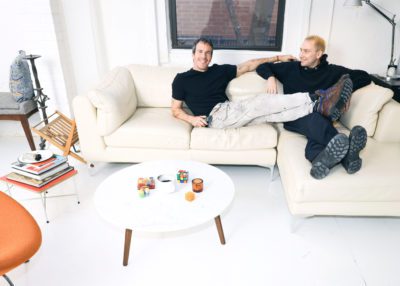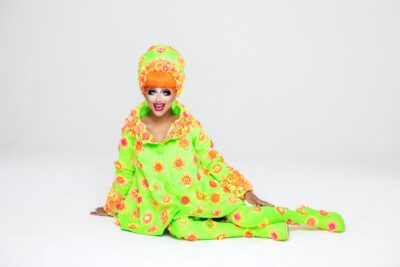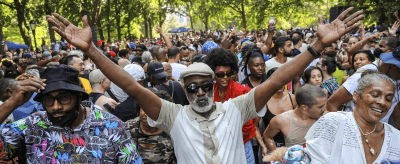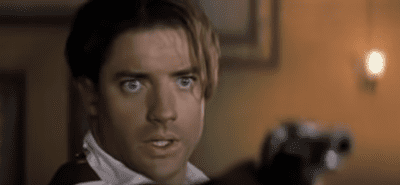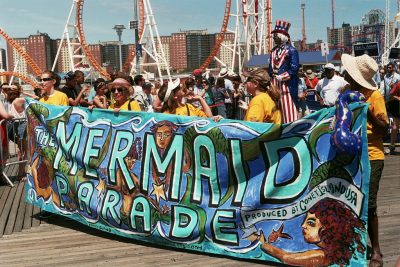Graham MacIndoe (center) and The National in 2018 (Photo by Stu Tenold)
The National’s photographer discusses 20 years of shooting the band
Graham MacIndoe's new book, 'Light Years,' documents the transformation of the Brooklyn band into global stars over two decades
It all started with an email from California. Before the pandemic Matt Berninger, the lead singer of the once-Brooklyn band The National, sent a middle-of-the-night message to the group’s long-time photographer, Graham MacIndoe: “I think it’s time we made a book.”
You could also say it started with a concert in 1978. MacIndoe, then 15 years old, took a bus from his small Scottish town to Edinburgh to see The Clash. The “feeling of euphoria” he saw in the crowd changed his life forever. That concert—one of the first he ever saw—turned his love of music into an obsession. Besides collecting records and posters, he started photographing live shows, first as an amateur, then more seriously as he found his way to art school.
In the late 90s, when MacIndoe was a professional photographer working in New York City, he became friends with graphic designer Scott Devendorf. He—like “every second person at that time,” MacIndoe quips—was playing bass in a band, with friends who had moved from Cincinnati to Brooklyn. That band, of course, became The National.
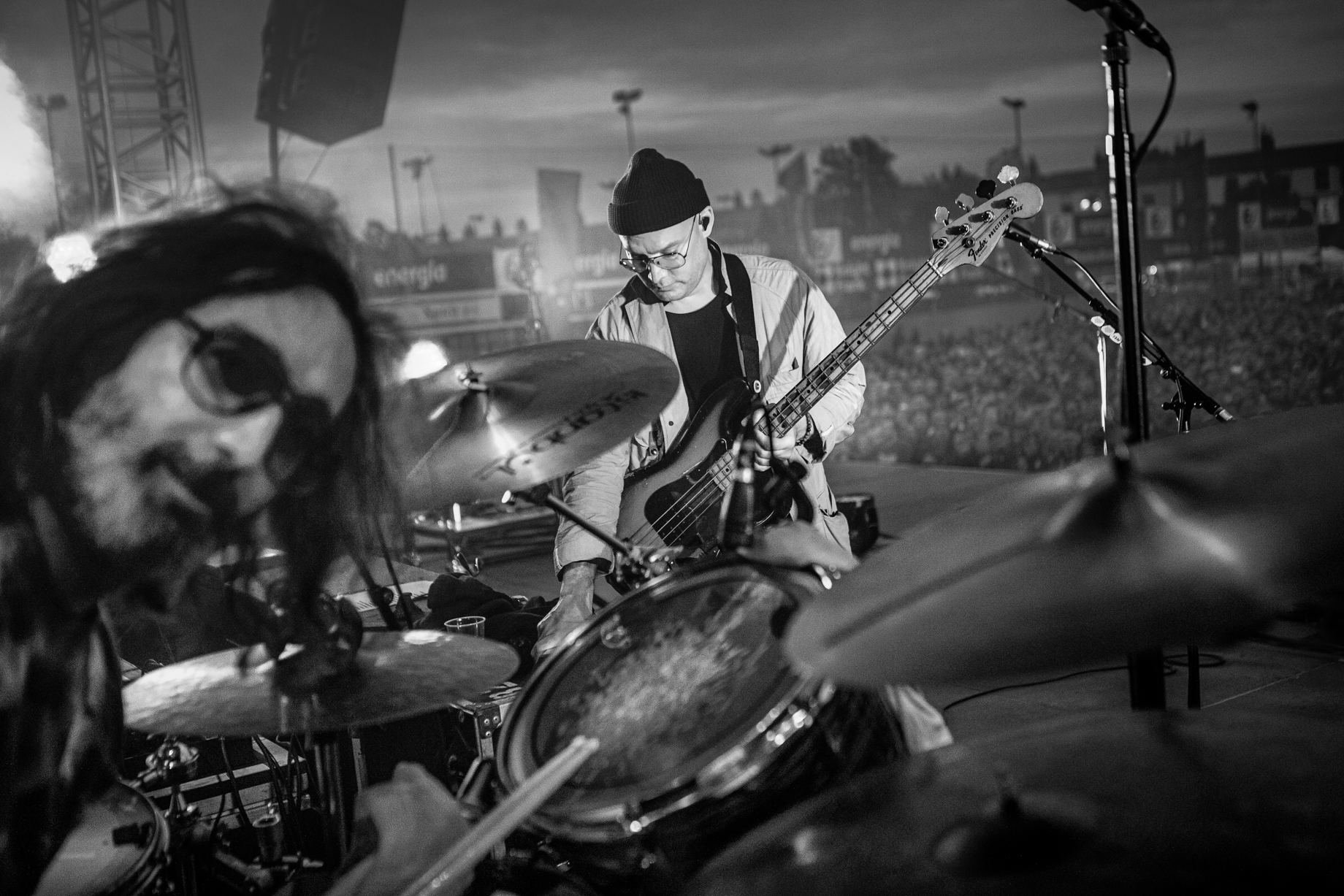
Left to right: The National’s Bryan and Scott Devendorf (by Graham MacIndoe)
Full circle
Besides seeing The National play live at that time (“for 20, 30 people”), MacIndoe took the first portraits of the band in 2001, around the time they were self-releasing their debut album. Twenty years later, the relationship between the band —now spread all over the planet— and the Brooklyn-based photographer is being marked with the publication of “Light Years,” a limited-edition book of more than 150 photos taken by MacIndoe and short essays written by himself, the band, and MacIndoe’s wife, reporter Susan Stellin.
“It’s all come full circle!” says MacIndoe, a long time Cobble Hill resident still with a Scottish brogue. “When I met Scott [Devendorf], he worked for this design company in SoHo, and some of the guys he worked with joined a different company, Pentagram, who now did the design and the packaging for the book!”
“There were some hiccups in making the book come out after the pandemic happened,” he says, also in reference to the production of an LP of unreleased live tracks that comes with some versions of the book. “But in a way it’s better that it came out this spring when it’s the 20th anniversary of the first photos I took of them.”
The images MacIndoe has taken of The National tell two stories. One of them is the transformation of that slightly awkward bunch of friends who traded shirts during the initial photo shoots into confident global stars, with intimate behind-the-scenes shots at their lives in the studio and dressing rooms. The other story is a look at the close relationship The National has with their fans, not only during the frequent trips frontman Matt Berninger makes into the middle of the crowd during songs, but also at the sense of community they generate.
“When you go see a live show—and I see bands in Brooklyn all the time—you can see what music does: draw people from all walks of life that may have nothing to do with each other, except being there to love music and enjoy the lyrics,” MacIndoe says.
“The National have such dedicated followers, because they’re good and caring people. I’ve seen Matt walk to people waiting in line before gigs and talk to them. They think about their fans when they decide where to play—sometimes peripheral places—or when they make their setlists. And their fans understand that.”
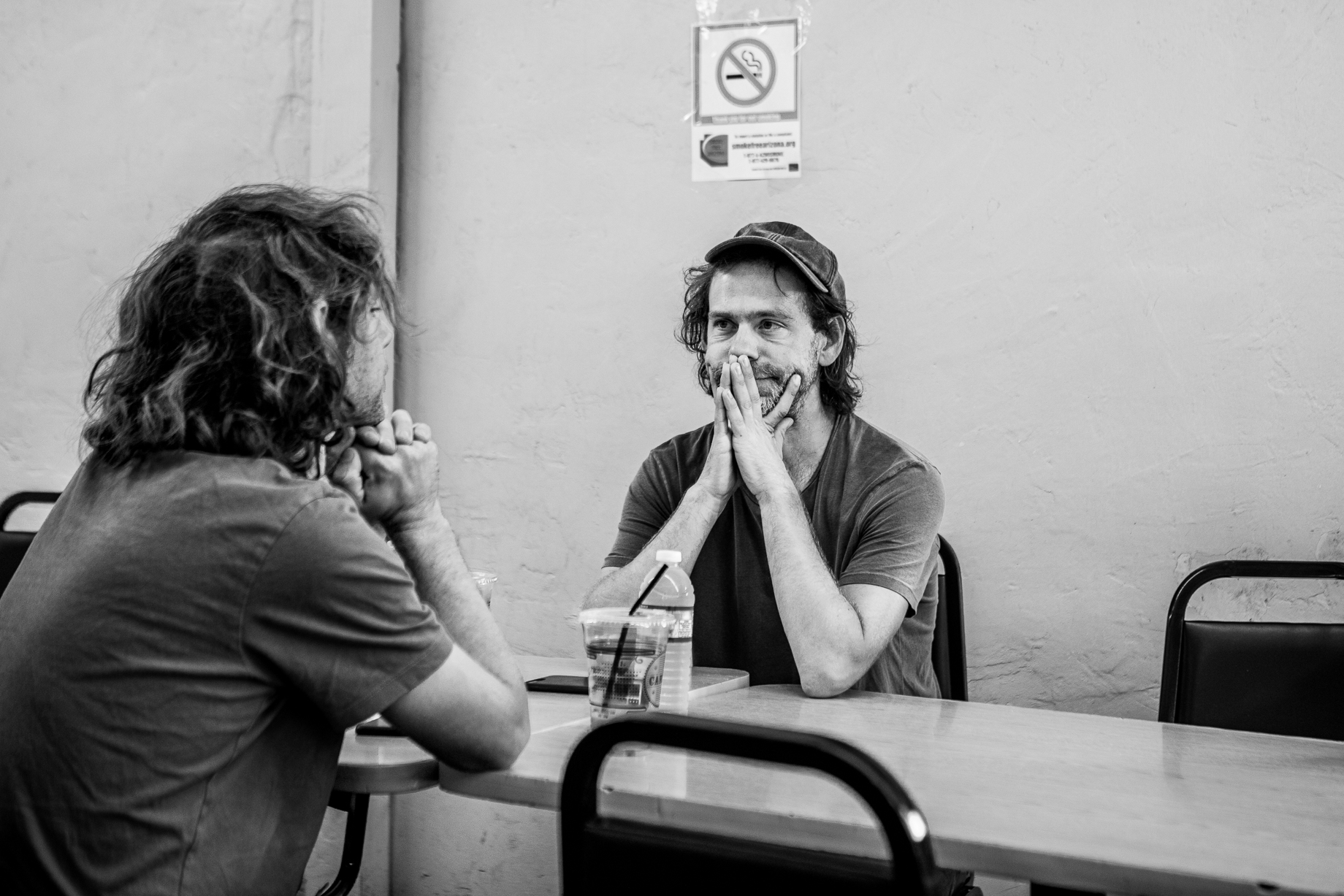

Left to right: Guitarist Aaron Dessner and twin brother guitarist-keyboardist Bryce (Photo by Graham MacIndoe)
A family affair
The National, which includes two pairs of brothers, is a family affair in several ways, and that has extended to MacIndoe. Their paths diverged when the photographer developed an addiction to drugs in the mid-aughts, missing the rise of the band and spending time in prison. In his essay in the book, MacIndoe recalls the time The National came on the prison radio he was listening to with his cellmate, and he couldn’t believe he used to have a connection with them.
“In 2012, when I got better, I reached out to Scott [Devendorf] and he invited me to come up to Rhinebeck, where they were recording Trouble Will Find Me, to come shoot them,” MacIndoe remembers. “I was nervous, still recovering from addiction, wondering how people would look at me. And they just welcomed me back. That was a big groundbreaker. It was like a homecoming for me, like it was all OK.”
After that, the relationship between the photographer and the band got even stronger. They asked him to shoot the recording sessions and cover for their 2017 album Sleep Well Beast, and then to join them on the road. (There is a lot of down time and looking at phones he says, “it’s not ‘Cocksucker Blues’” he says, in reference to the infamous Rolling Stones documentary.) With time, he learned to study the setlists to predict what would happen at different times during live shows, so he would know where he needed to stand to capture a specific image.
“I used to be more restrained when shooting them, but over the last six years the band accepted me and I sort of became this invisible member. Then they let me go anywhere, even the crew,” he says. “As I accumulated photographs, I would position myself in specific places to get specific shots. I knew I was missing some other images, but I already had them.”
Getting to spend so much time with the band taught him to expect the unexpected and how to capture the fleeting magic of live music.
“Even though we live in a world of cell phone pictures, I’ve captured some moments of the band and the fans that they didn’t get to appreciate because at the time they were stressed or busy performing—and now they get to see them and appreciate them again,” he says. “It’s been very refreshing for me that I can give these photos not only to the fans, but to the band.”
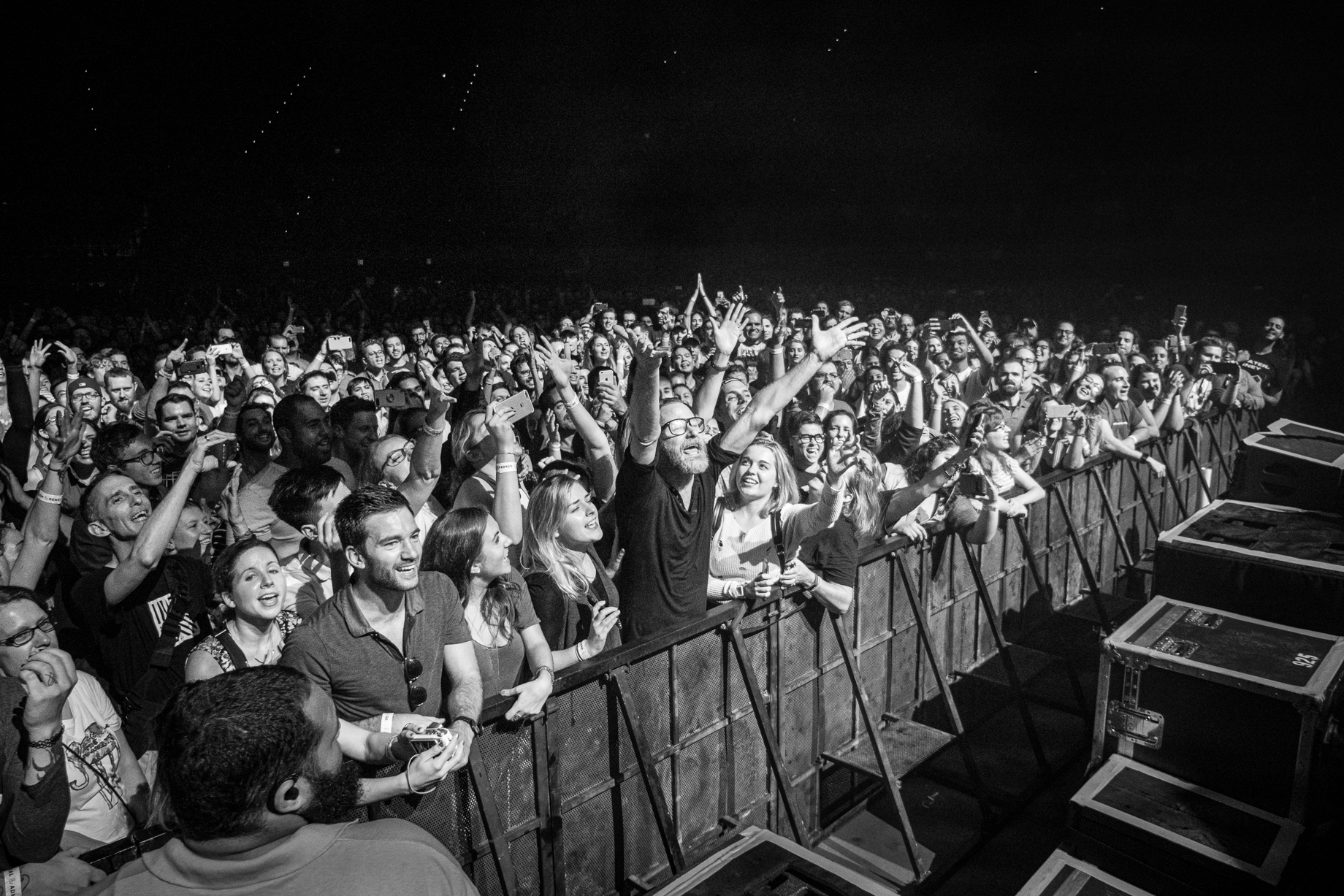

Singer Matt Berninger, center, on crowd control (photo by Graham MacIndoe)
You might also like 

















